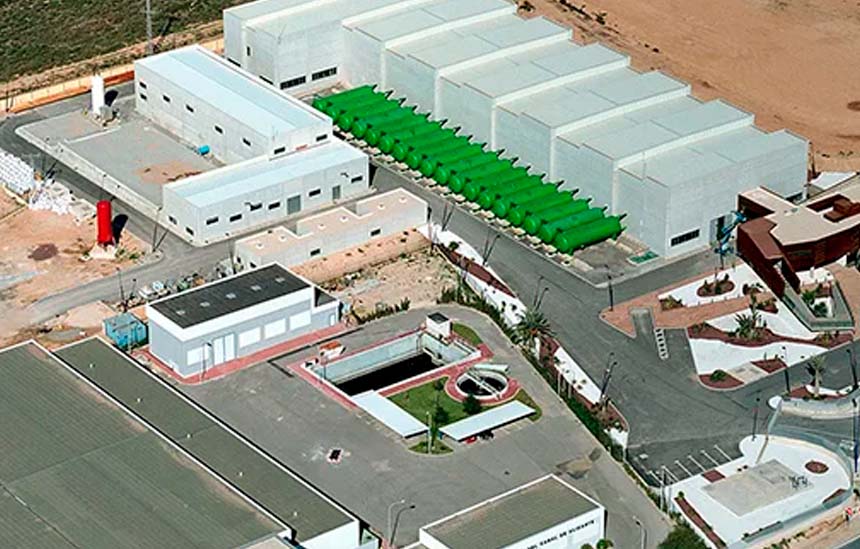- The Taibilla Canals Association awarded the joint venture the operation, maintenance and conservation service of the Alicante Desalination Plant.
- The two production lines of the desalination plant have a capacity to produce water for consumption of 122.500 m3/day, enough to supply more than 470.000 inhabitants.
The joint venture formed 50% by Sacyr Agua and GS Inima will be in charge of the operation, maintenance and conservation of the Alicante desalination plant. This plant It has a total treatment capacity of 122.500 m3/day between the two production lines that make it up: Alicante I, with 57.500m3/day, and Alicante II, with 65.000 m3/day.
The contract awarded by the Mancomunidad de los Canales del Taibilla to the joint venture has a amount of 11,6 million euros (VAT included) and a duration of two years, plus a possible extension of another two years.
The scope of the contract includes all tasks that are necessary for the correct operation of the plants, both in terms regarding the quality of the product water and the application of each and every one of the parts of which the facilities are made up (system ranging from the seawater intake works to the pumping of the product water to the reservoirs of the Mancomunidad de los Canales del Taibilla).
The desalination plant has the capacity to produce drinking water to supply a population of 470.000 inhabitants.
The operation of the facilities will be carried out under the most demanding quality, environmental and sustainability standards, in order to ensure the correct operation and maintenance of the plants meeting the production targets demanded by the agreed municipalities.
GS Inima carried out the design and construction of Alicante II, which commissioned in May 2008, and has been operated from the beginning and for 11 years by GS Inima. Sacyr Agua has managed this plant for the last four years, a period in which it has implemented innovative techniques such as the use of underwater drones to carry out surveys of the plant’s underwater facilities.




